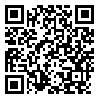BibTeX | RIS | EndNote | Medlars | ProCite | Reference Manager | RefWorks
Send citation to:
URL: http://rjms.iums.ac.ir/article-1-2078-en.html

 , Mir Mohammad Jalali *
, Mir Mohammad Jalali * 
 , Abtin Heidarzadeh
, Abtin Heidarzadeh 
 , Seyed Mojtaba Mehrdad
, Seyed Mojtaba Mehrdad 
 , Rezvan Ruhi Sefid Mazgi
, Rezvan Ruhi Sefid Mazgi 
 , Fataneh Bakhshi
, Fataneh Bakhshi 

Background: Hearing is one the most important senses of human. Hearing loss is one of the greatest chronic disabilities. Noise induced hearing loss (NIHL) is a common occupational disorder and several factors affect its intensity. One of these factors is individual differences. The aim of present study is the assessment of dyslipidemia’s effect on NIHL. This study was conducted to evaluate association between dyslipidemia and noise induced hearing loss.
Methods: This was an analytic-descriptive study which was conducted in 2010. The factory workers of Rasht industrial city with the following inclusion criteria were selected: environmental noise above 85dB, age below 55 years, no otologic disease or surgery, and no history of usage of ototoxic drugs. A total of 298 workers were assessed. After physical examination and audiometry, we measured the level of serum cholesterol, triglyceride, high and low density lipoprotein of participants. The results were analyzed with the SPSS version 17.0. The p value < 0.05 is considered significant statistically.
Results: In this study, 250 men and 48 women were assessed. The mean age of participants was 35.8 years. The participants had high noise exposure of 11 years on average (1-26years). Ninty five of them had NIHL (31.8%). The frequency of serum cholesterol, triglyceride, high and low density of this group were 31.5%, 10.8%, 53.2% and 14.3%, respectively. These levels in the group without NIHL (203 workers) were 38.9%, 12.6%, 58.9% and 21.1%, respectively. There was no statistical significance between these levels in the two groups. By backward logistic regression method, we observed that the duration of employment and gender increased the hearing threshold of 4 KHz frequency in the NIHL group. The odd ratio of hearing loss in male gender was 3.36 (95% confidence interval: 1.61-8.95, p= 0.004). The other effective factors on the hearing threshold of 4 KHz frequency had statistical, but no clinical significant difference in two groups.
Conclusion: We observed no statistical significance of dyslipidemia frequency between two groups . In addition to duration of employment, male gender was the other observed related factor with hearing loss in the two groups. This effect may be due to protective effect of estrogen on the hearing level. Studies with more sensitive approaches on a larger sample is advised.



